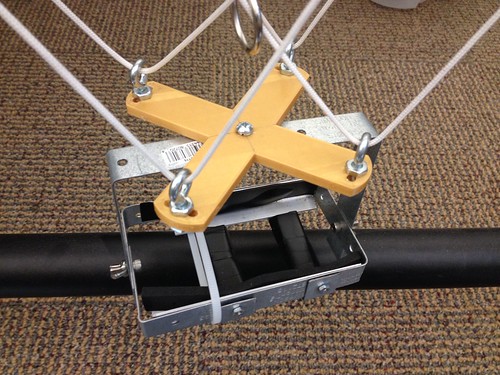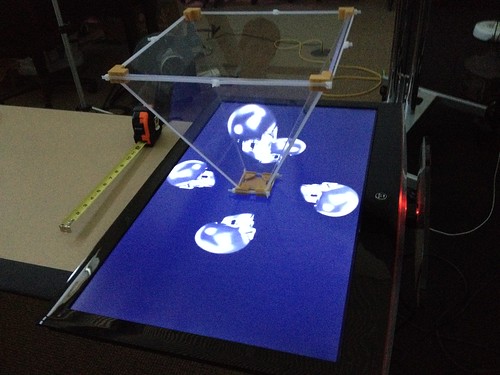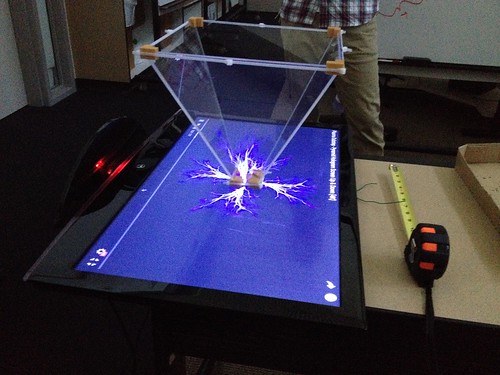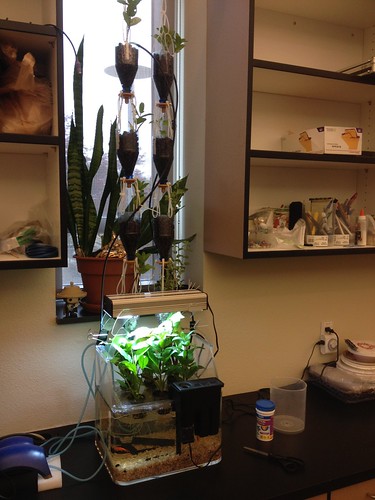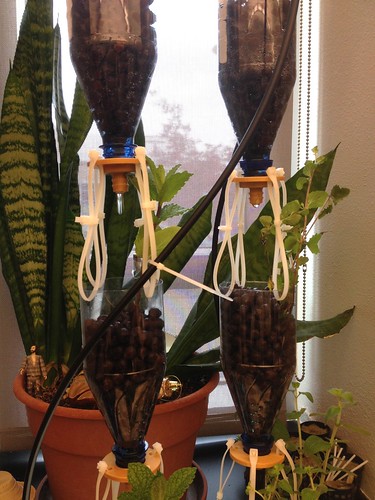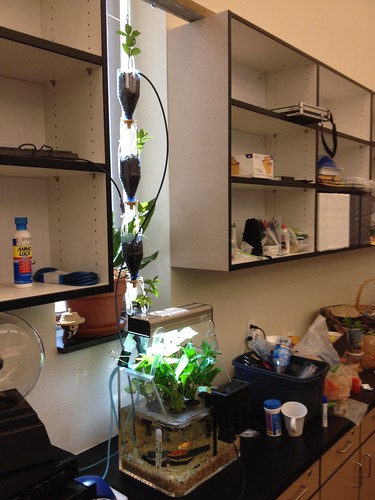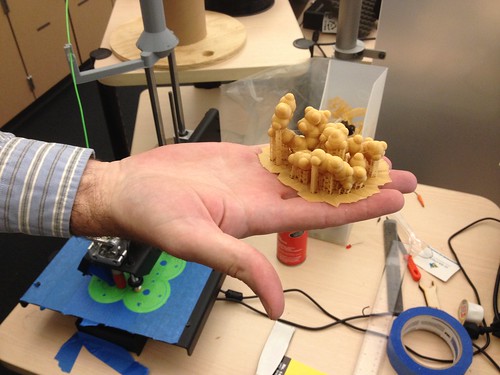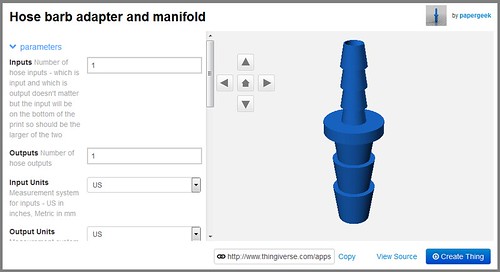Details over at http://www.dolookdown.org/2016/04/18/3d-printed-picavet/
Did a quick SketchUp model of a picavet and printed it for a BAP day on Wednesday. Much lighter than the setup it replaced.
When I have a little more time, I’ll look into replacing all the metal parts with printed plastic ones.
Working with Max Mahoney (Chemistry) on a molecule visualizer, and we had the opportunity to throw the prototype on a 30″ monitor. The results are encouraging!
Next up: Max is going to render a custom molecule video. We’ll format that for the system, and assuming all goes as planned, work out the enclosure issues, which will likely involve some CNC work.
After addressing the venturi challenge, I was able to get the second chain of recycled bottles for the drip aquaponics system set up:
It ran all weekend without a hitch, and the science fish seem pleased. I’ve planted the bottles with cuttings of mint, oregano, yerba buena, and lemon balm, and hopefully they’ll all root.
Max Mahoney (Chemistry) and I have been talking about using volumetric display technique like the one below for use in Chemistry classes to help students understand molecular structures.
Max has done a fair bit of research, and recently ordered up some acrylic pieces to scale the idea up. The pieces arrived, but the angles of the mating surfaces were not quite right, so solvent welding was looking iffy. Today in the lab we brainstormed some solutions, and Max got to work modeling a connector in SketchUp.
After some heroic calculations having to do with the angles in play, Max hammered out a model and we printed a set. The setup seems to be working so far, but we ran out of time to print a set for the top. Stay tuned!
Still waiting for the power and some other critical infrastructure pieces for the library aquaponics system to line up, so I’ve been working here and there on an open source, 3D printed drip system that uses recycled soda bottles as plant containers.
I was never quite able to get the venturi – the piece that uses air from an aquarium air pump to push water up a tube to water the plants – to work properly. It would work for a few hours, and then quit, I think because of clogs in the tiny air courses, so I set out to explore other solutions. Working off of an idea I found on Instructables for a bubble lift hydroponics setup, I headed to the hardware store for a few items, and was able to cobble something together. Science!
It’s been running all day, and seems stable. I’ll let it run overnight just to be sure, but I felt confident enough to stick some mint cuttings into the bottles, and hope they’ll root.
Stalwart champion of innovation Jason Pittman (Professor, Geosciences) – he of the long-term Innovation Center/Geosciences KAP/BAP/Quadcopter collaboration dolookdown.org – and I have been discussing uses for 3d printing in geology, geography and GIS. Most recently we’ve been looking at Terrain2STL (http://jthatch.com/terrain2stl/), which generates an STL from a selected area in Google Maps. Haven’t had time yet to print from there, but we did have a chance to print this sweet pre- and post-eruption model of Mount St. Helens (CC BY-NC-SA, by Tree_House_Fire:
The venturi in the tower aquaponics system doesn’t seem to work reliably. I’m guessing that the inner pathway keeps getting blocked, either by artifacts of the printing process, or with gunk pulled in from the water. In any case, I’m going to try a different approach. Specifically, I’m going to put a small pump in the tank, and have that on a timer, periodically flooding the bottles. To do that, I need to connect tubing of various diameters. I poked around on Thingiverse and found this hose barb adapter and manifold (CC BY-SA, by papergeek).
A few tweaks in the Customizer, and I’m able to print essentially any barb I need. Using a 3d printer to print objects to demonstrate 3d printing is one thing, and using a 3d printer to print useful objects for immediate use in a project is something altogether different – something like a miracle.
While waiting for the various parts and processes to resolve for the aquaponics project, I’ve been experimenting with 3Dponics, and open source system/community for 3D printed aquaponics parts. To set the system up, I cut and punched holes in plastic water bottles, then printed screw-on drip nozzles (CC BY-SA, 3Dponics), and an aquarium air pump driven venturi to provide water for the system. With the venturi in the experimental system/quarantine tank, I turned on the pump, and the whole thing seems to work perfectly!
I’m going to let it run for a few days to make sure things are good to go, and then I’ll fill the bottles with plants. My current thinking is to root mint cuttings. Mint is perfectly happy in wet and low-light situations, and roots readily from cuttings.

